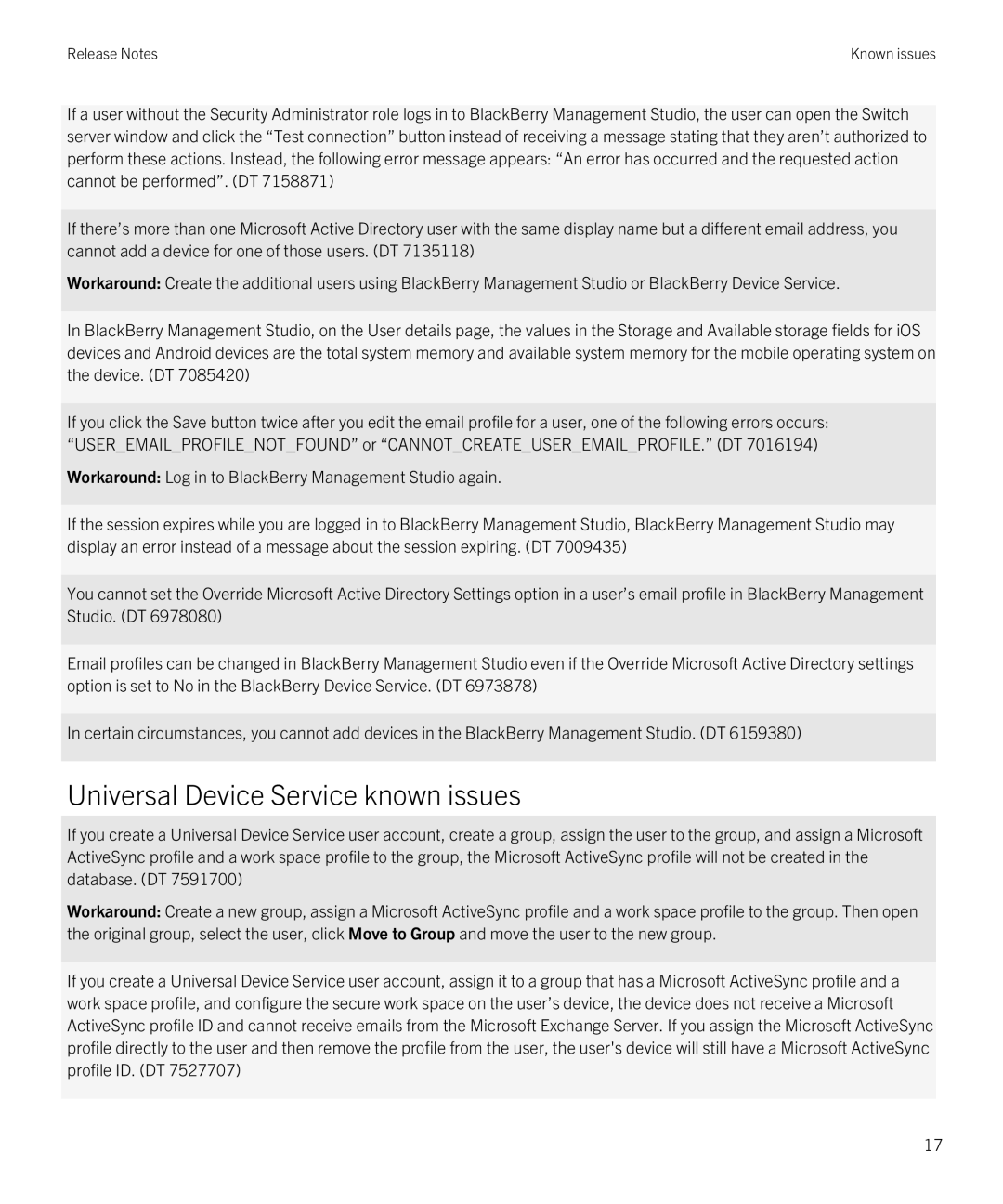
Release Notes | Known issues |
If a user without the Security Administrator role logs in to BlackBerry Management Studio, the user can open the Switch server window and click the “Test connection” button instead of receiving a message stating that they aren’t authorized to perform these actions. Instead, the following error message appears: “An error has occurred and the requested action cannot be performed”. (DT 7158871)
If there’s more than one Microsoft Active Directory user with the same display name but a different email address, you cannot add a device for one of those users. (DT 7135118)
Workaround: Create the additional users using BlackBerry Management Studio or BlackBerry Device Service.
In BlackBerry Management Studio, on the User details page, the values in the Storage and Available storage fields for iOS devices and Android devices are the total system memory and available system memory for the mobile operating system on the device. (DT 7085420)
If you click the Save button twice after you edit the email profile for a user, one of the following errors occurs: “USER_EMAIL_PROFILE_NOT_FOUND” or “CANNOT_CREATE_USER_EMAIL_PROFILE.” (DT 7016194)
Workaround: Log in to BlackBerry Management Studio again.
If the session expires while you are logged in to BlackBerry Management Studio, BlackBerry Management Studio may display an error instead of a message about the session expiring. (DT 7009435)
You cannot set the Override Microsoft Active Directory Settings option in a user’s email profile in BlackBerry Management Studio. (DT 6978080)
Email profiles can be changed in BlackBerry Management Studio even if the Override Microsoft Active Directory settings option is set to No in the BlackBerry Device Service. (DT 6973878)
In certain circumstances, you cannot add devices in the BlackBerry Management Studio. (DT 6159380)
Universal Device Service known issues
If you create a Universal Device Service user account, create a group, assign the user to the group, and assign a Microsoft ActiveSync profile and a work space profile to the group, the Microsoft ActiveSync profile will not be created in the database. (DT 7591700)
Workaround: Create a new group, assign a Microsoft ActiveSync profile and a work space profile to the group. Then open the original group, select the user, click Move to Group and move the user to the new group.
If you create a Universal Device Service user account, assign it to a group that has a Microsoft ActiveSync profile and a work space profile, and configure the secure work space on the user’s device, the device does not receive a Microsoft ActiveSync profile ID and cannot receive emails from the Microsoft Exchange Server. If you assign the Microsoft ActiveSync profile directly to the user and then remove the profile from the user, the user's device will still have a Microsoft ActiveSync profile ID. (DT 7527707)
17
